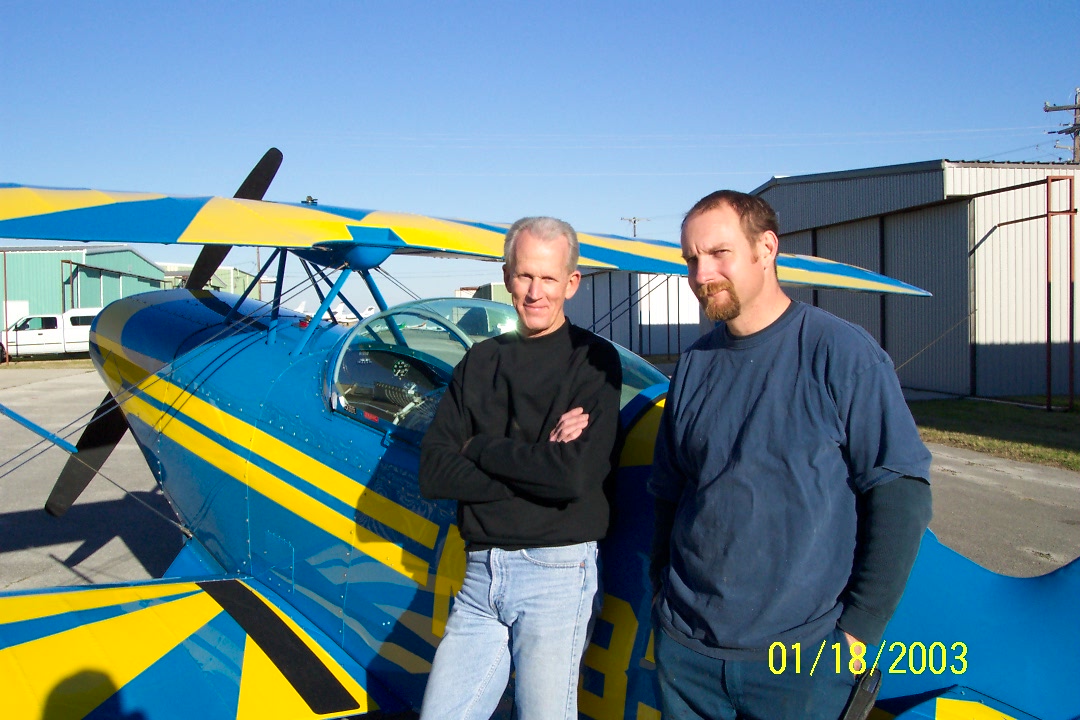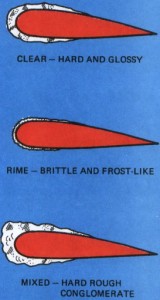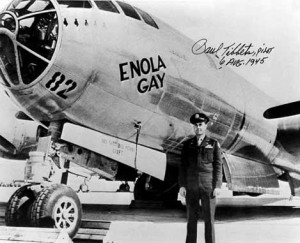Round Two wordfighting at the 2011 Amazon Breakthrough Novel Award (ABNA) corral began on February 24th and ended on March 13th. On or about March 22nd, Amazon will post the excerpts used in the judging and their associated reviews for each of the 250 entrants in each of two categories advanced to the Quarter Finals.
A friend and fellow writer sent me the following insider’s account of the Round Two behind-the-scenes action during last year’s contest, and I’ve elected to publish it here with only minor editing (and no images) because it offers an interesting view into the role of a reviewer in this particular writing contest and probably contains carry-over value to others as well.
I say this with full knowledge of the criticism directed by some at ABNA for the structure of this contest. On the other hand, I totally reject the opinions of writers who complain about the hurdles placed in their path. No one forced them to enter. To suggest that having to write a pitch is unfair, and ask why the judges can’t begin with the novels because that’s where the award-winning writing is, and conclude that the contest sucks because it rewards mediocre talent, well, that’s simply bogus.
I am also aware that very good novels (and maybe the best of the bunch) will not be considered for the grand prize because of the luck of the draw. It would be really cool if we could pick our judges, but absent that, chance plays a role as in all aspects of life.
What follows is long, but I think it’s worth a read because the ABNA contest emphasizes the critical importance of engaging readers very early in the story, and in that regard it accurately reflects the demands of the marketplace as reflected in how manuscripts are submitted and ultimately selected for publication.
Amazon Breakthrough Novel Award (ABNA) Writing Contest Overview.
The Amazon Breakthrough Novel Award or ABNA allows people 13 and older from 20 different countries to submit their unpublished or self-published English language novel for consideration for a grand prize of a publishing contract with Penguin USA and a $15,000 advance on royalties. In 2010, a similar prize for young adult fiction, aimed at twelve- to seventeen-year-old readers, was added to the general fiction prize awarded in past years. Both prizes are awarded in parallel contests following the same procedures.
In addition to the grand prize, thousands of other prizes offer a total value of over $100,000, including a trip to the awards ceremony in Seattle, Washington for the three finalists in each category and reviews from Publishers Weekly to use in marketing. Each entrant gets a proof copy of their novel from CreateSpace.com. In the past, not only have the first-place winners received a publishing contact, but the publicity generated has helped produce contracts for many other finalists and semifinalists as well.
Only the first 5,000 manuscripts submitted in each category are accepted. Each author submits their entire novel, an excerpt from the beginning of the novel consisting of the first 3,000 to 5,000 words, and a pitch of up to 300 words, as well as the necessary personal information.
ABNA Contest Stages and Process:
The contest has several stages of judging used to narrow the field to the final grand prize winners.
In the first stage, which lasts about two weeks, Amazon editors narrow the field from 5,000 entries in each category to a maximum of 1,000 based solely on a review of the pitch. The pitch is a cover letter with a short description of the concept of the novel intended to sell it to the reader, like a sales pitch or advertisement. The pitches must 300 words or less and are evaluated for the quality of the writing, originality, and overall strength. A list of the entrants advanced to the second stage is posted on the ABNA website.
I participated in this stage as a Vine Voice reviewer. Amazon Vine Voices review each excerpt of the beginning of the manuscript and write short critiques addressing three questions and rate them across four dimensions. Each of the three questions about the excerpt may be answered by the Vine Voice with up to 300 words, addressing the strongest aspect, the aspect that needs the most work, and the overall opinion of the excerpt. The excerpts are also rated on a scale of one to five stars for overall strength, plot and hook, prose and style, and originality.
The winners of this stage are based primarily on the overall strength score with other ratings used as tie breakers. The 1,000 contestants left in each category are reduced to 250 during this stage, which lasts about three weeks. The excerpts and reviews from the 250 winners from each category are posted on the ABNA website. Amazon customers are then invited to read, review and rate the excerpts.
In the third stage of the contest, the Quarterfinals, professional reviewers from Publishers Weekly read, review, and rate the complete manuscripts from one to five stars on character development, originality, plot, prose and style, and overall strength. This process takes over a month and results in 50 entries in each category advancing to the fourth stage of the writing contest based on their average scores.
In the fourth stage or Semifinals, the manuscripts are evaluated by judges selected by Penguin USA to choose three finalists in each category using the same criteria used in the third stage. This stage lasts almost a month.
In the fifth stage, the Finals, Amazon customers read and vote on the six finalists to determine the two grand prize winners, one for young adult fiction and one for general fiction. The manuscripts that reach this stage are also reviewed by a celebrity panel made up of a famous author, an agent, and an editor so that their opinions can be considered by Amazon customers during the voting. This stage lasts a little over a week.
Later in June, less than two weeks after Amazon customers have selected the two grand prize winners, the six finalists and a guest are flown to Seattle, Washington, where Amazon’s international headquarters are located, for the grand prize award ceremony. There, the two deserving winners will receive offers to have their novels published by Penguin USA as well as a $15,000 advance. One can only try to imagine how excited the six finalists are in Seattle as the winners are announced.
An Amazon Vine Voice Reviewer’s Insider View of the contest:
Vine Voices are Amazon customers who are selected to receive new products from vendors and publishers for review based on their history of submitting reviews on Amazon products. Not all of these Vine Voices are asked to participate in the contest and the criteria for selection are unknown to the Vine Voices chosen. Since each Vine Voice reviews 40 excerpts and each excerpt is reviewed by at least two reviewers, and there are 2,000 entries at this stage, the minimum number of Vine Voice reviewers required to complete 4,000 reviews is 100.
In 2010, the 40 excerpts each Vine Voice received were a mix of young adult fiction and general fiction. Amazon defines young adult fiction as that intended to be primarily enjoyed by readers twelve to seventeen years old and adult fiction is for those seventeen years and older. The excerpts I received seem to have been almost equally divided between the two categories, although that was not easily determined by the title or even content alone. The manuscript excerpts are accessed, reviewed, and rated through CreateSpace.com, an online on-demand publishing and distribution system that is now part of the Amazon group of companies. Once a review has been submitted, it is locked and cannot be accessed again by the reviewer.
Some Vine Voice participants write all their reviews offline and then submit them later after looking at them again. Forty excerpts is a great many to read and review and rate with the consideration that the contestants deserve, so the Vine Voices have over three weeks to complete their work. The excerpts are from 3,000 to 5,000 words long, which is somewhere in the neighborhood of 10 to 20 pages of a published novel. The excerpts are supposed to be from the very beginning of the novel. Most of the entrants seem to do a good job of choosing to end the excerpt at a cliffhanger in the story or at a natural pause in the writing, but a few seem to just cram in the maximum allowable number of words or else had no good point in the manuscript to end the excerpt.
This stage is the first to evaluate any of the text of the novel itself. In the first stage, entries were chosen based on the pitch, which is about the manuscript, but not part of it. Some people with excellent novels might have been eliminated because of a poorly written pitch, which may be less common than poorly written novels that make it through based on a decent pitch. At times I wondered what the successful pitch must have looked like compared to the quality of the excerpt of the manuscript and on occasion I wished that I had been able to read the pitch to see where the novel was going and how the excerpt fit into the rest of it.
A few entries are disqualified in this second stage because the authors chose an excerpt from elsewhere in the book, usually at a point with lots of action or of what the author believed to be his or her best writing. The Vine Voices are required to report this failure to follow contest rules. Another common reason for disqualification at this stage is that there are always a few authors who submit the excerpt with their name on it, which also violates the rules. Having a name on the manuscript excerpt undermines the integrity of the contest, which judges only the work and its pitch. Authors must remain anonymous to the judges. For the same reason, I did not download the list of authors and titles that had advanced to this stage until I completed my reviews.
Another and fortunately less common reason for rejection at this stage is that the Vine Voice recognizes plagiarism. It is very upsetting to have to report these rule violations, especially when the excerpt is promising in other respects. In the 40 excerpts I reviewed, two were not from the beginning of the novel and one had the author’s name on it. The Vine reviewers are still required to complete their assessments but it can be difficult to evaluate the hook, for instance, if the excerpt is from the middle of the novel and you do not know even know what the hook was.
There were also a couple of excerpts that seemed to be in the wrong category of young adult vs. general fiction, although I could not be sure if there had been a mistake or if the author’s opinion of where their work belonged differed so greatly from my own assessment.
Then there were the two excerpts that seemed to be written for very young children rather than young adults. I commented on these findings in the reviews, and the second issue in particular colored my opinions. Although we were not instructed to report these issues, I would imagine that the judges in later stages would be hesitant to award the general fiction prize to a story about tadpoles named Binky, Winky, and Tinky who grow up into frogs and venture across the road to the Big Pond.
I chose to read each excerpt at least twice. I would read 10 or so and then reread and review and rate them later, usually the next day. This allowed me to form an initial impression and then test that impression with a second reading to fully form an opinion.
Usually my first impressions were confirmed, but on occasion I found a deeper appreciation for an author’s writing style or perception on the second reading. A few excerpts I read a third time while actually writing the reviews to help me find examples to use in my comments, usually when the excerpt was either very good or very poor in overall quality. I felt that two readings was the least I could do to properly evaluate the writing.
Thoughts on Categories of Quality of the Manuscript Excerpts:
The excerpts seemed to easily fall in one of three categories: very poorly written works with few redeeming qualities, works that were generally mediocre with one or two noteworthy aspects either good or bad, and those that were very good in every aspect.
Fortunately there were only a very few excerpts that were so poorly written that I had difficulty finding something strong to praise, and usually I could at least honestly laud the writer’s originality or imagination. Some of these seemed to be young adult novels written by young teenagers, and these required special tact in commenting on the negative aspects and overall opinion. Usually they followed a standard story line seen in films and books aimed at young people. I tried to encourage the writers to continue to work at writing and their studies.
Then there were generally mediocre excerpts that had some negative quality such as atrocious spelling and grammar and constant use of hackneyed phrases, along with an outstanding gift for describing things in an original fashion, very realistic dialogue, or an interesting and original concept. These were actually the easiest excerpts to evaluate because I could find examples of something both very strong and something needing work to assess. That allowed my negative criticism to be tempered with positive commentary, and I felt that I might even be able to help the author write better in the future even with the brief comments I could make.
In general, judging from comments entrants made about the contest, writers crave assessment and review of their work as a form of feedback for improvement. I would also note any minor issues such as spelling or other errors, believing that the writer would improve the manuscript and continue to work towards publishing it even if it wasn’t ready to win the 2010 ABNA contest. A few of these really seemed to have potential, especially if it seemed to be a young author, and I wouldn’t be surprised to see them published at some point in the future with enough hard work.
The smallest category consisted of the best and strongest works. It was easy to praise these and find examples of their strong points. One excerpt made me cry and several made me laugh. Some of them were so good that I was truly aggravated not to be able to review the entire manuscript, although there is a good chance that they will be published at some point in the future and I will have the pleasure of paying to read them in print.
These excerpts were generally very well polished and with the exception of a few typos needed only very minor editing. In a few cases, I was hard-pressed to find any significant aspect that needed work. Unable to offer any truly helpful criticism, to some degree these reviews tended to be more about my reaction to the work than about the work itself. I’m sure those authors didn’t mind too much being left only with unhelpful compliments and after all, it really should be difficult for me, a reviewer, to give a truly outstanding author helpful advice.
General Observations on the Writing and Contest:
In many of the excerpts, I was very impressed with how much character development was possible in so few pages. The originality of some of the writers was truly humbling, both on a large scale like the overall concept of the novel and on a small scale such as how a small detail was described.
Many of the writers seemed to be using writing as a form of psychological or spiritual therapy, sometimes with good results to present to the reader. There was a range of deep emotion expressed with words from people of all ages and from all over the world. The ability to express it varied greatly, but it was always touching.
Many of the young adult novels were fantasy or science fiction. Some of these entries seemed to be better suited for video games or action films than a novel. There were probably more excerpts set in the past and the future than the present, and they were set in many different places on this planet and in unknown worlds. There were some excerpts very similar in concept, but for the most part each one was very different from the rest in terms of theme and content and of course, writing style.
I also gained an appreciation for the entire publishing industry and how difficult it must be to evaluate the manuscripts submitted. I am very impressed with the design of the contest and how it filters 10,000 novels into two final winners through the efforts of hundreds of people spending many thousands of hours reading and evaluating pitches, excerpts, and manuscripts, writing reviews, and supporting the entire process. The information technology used to facilitate the process is also impressive if one stops to consider it.
Overall, reviewing the writing was hard but enjoyable work. It took almost 1 1/2 hours to read and review each excerpt, on average. I was glad when it was finished but would definitely do it again if offered the opportunity.
Advice for Writers Entering the ABNA or Similar Writing Contests:
After reviewing the excerpts, many of which repeated the same problems, I feel qualified to give some basic advice from a reviewer’s standpoint to help writers win ABNA. Much of this advice should apply to other writing contests as well.
Read the contest rules and follow them very carefully. Read them again and get someone else to read them to you to make sure you understand them. Don’t put your name where it is not supposed to be. Make sure your excerpt is from the beginning of the manuscript and is the right length. Pay attention to deadlines. Enter early. In spite Amazon’s warning not to wait until the last minute, some people were unable to get their entries in or to complete them because of busy servers.
To have the best chance of winning, make sure to enter your novel in the correct category. Don’t enter a young adult novel in the general fiction contest or try to win a short story or poetry prize with it. Put at least as much work into writing your pitch as you do into writing your novel. Only 20% of entries were selected to have the excerpts reviewed and the decision was based solely on the pitches. If a pitch was not better than four out of every five then the actual novel was not evaluated even if it was the best novel submitted.
If you are going to be judged on an excerpt at some stage in a contest, put special effort into perfecting it. Your entire novel should be polished, but if one part of it will receive special attention from judges, then you should give it special attention as well. Only 25% of the entries will advance to the next stage and again, it is based solely on the excerpt. If you have a good pitch and a good excerpt, the rest of your novel could be absolutely terrible and you will still advance from being 1 of 5,000 contestants to being 1 of 250 contestants. In other words, the top 5% of entries are chosen based only on the pitch and the excerpt. Make sure yours are good so your entire manuscript will be evaluated in the next phase of the contest.
Several excerpts I reviewed had very complicated and overworked opening prologues or paragraphs that just didn’t work very well when the next paragraph would have made a much better start. It is absolutely possible to try too hard and get so involved in your writing that you cannot see where the strengths and weaknesses are.
Get other people to read and review your work. There are even groups of writers on the Internet who help each other with this. Use spell check and grammar check. I was surprised at some of the misspellings and other simple errors in the entries that spell check would have caught. The submissions are supposed to be ready for a final, professional editing prior to publication and should not contain dozens of careless errors, which definitely affects the reviews and ratings. On the other hand, don’t rely on spell check alone as it does not catch all errors. You need to review it yourself and have other people review it or you will end up a “looser.”
Make sure that your submission is formatted properly so that the reader can tell who is speaking or thinking and avoid long paragraphs that are impossible to follow. If your novel relies on special formatting such as italics or colors to make sense, realize that the software platform you submit your work on may not support that formatting. Think of alternative ways to communicate your intent. You may not be able to submit drawings such as diagrams or maps that a reader might rely on in the published work.
Pay attention to basic principles and timeworn advice for writers. For example, sentence fragments such be used skillfully or not at all. If a sentence has no subject and there is no noun in the preceding sentence even likely to be the subject, you are making the reader work too hard. Make sure that you change viewpoints carefully and not inadvertently. Don’t address the reader directly unless it is your intention. Don’t use titles for chapters that contain spoilers, especially if it is a thriller or mystery. That takes the fun and interest out of reading your story. Avoid the use of clichés unless you have carefully considered their use. Don’t start your story with “It all began….” Don’t say that a character has piercing eyes of any color and certainly not emerald green. Emeralds come in many different colors and so does ink, if your night sky just has to be inky. If your character feels like he is in a dream, it had better be a good one.
Think twice before starting your book with a funeral. It’s okay if characters sometimes just say something, they don’t always have to whisper, shout, or wonder aloud. You can write “he said” and “she said” without feeling unoriginal. Read your manuscript specifically looking for these trite usages and ask others to look for them as well. On the other hand, go easy with the thesaurus. Your reader should not be forced to use the dictionary several times on each page.
Make sure that your dialogue sounds natural. Stiff dialogue can ruin an otherwise good piece of writing. If you can’t get someone else to read it out loud to you, read it yourself. Does it sound like something anyone would actually say? If not, then your character will not seem real to the reader. Make sure that you understand what you are describing. Several writers gave incorrect facts or descriptions of things or places that they very obviously had never seen yet were trying to accurately portray.
There are classic themes that work well for novels such as a hero fulfilling a quest or seeking revenge or a person unknowingly falling in love with a non-human (vampire, werewolf, alien), and classic devices such as portals to other dimensions or the discovery of a message or letter not intended for the one who finds it. These concepts have already been written about well so many times that if you write about them, you must do an excellent job or the reader will inevitably start making unfavorable comparisons.
Ask yourself and anyone who reads your writing if people will want to read it and recommend it to others. Above all, a novel is supposed to entertain and anything that breaks the writer’s hold on the reader’s attention or is even a minor distraction should be eliminated. The reader should forget that he is reading a book and just experience the story. The best excerpts did this and left me wanting to read the rest of the manuscript. Those are the ones that will advance to the next stage and have a chance to win publishing contracts as the ABNA grand prize or will be picked to be published at another time.

























